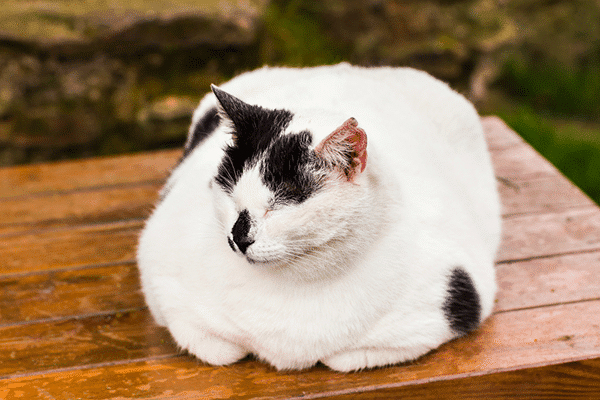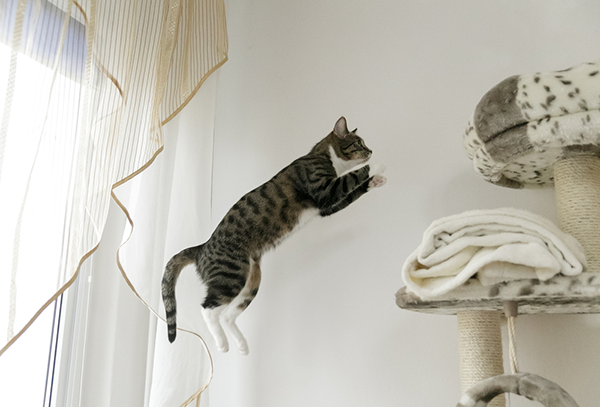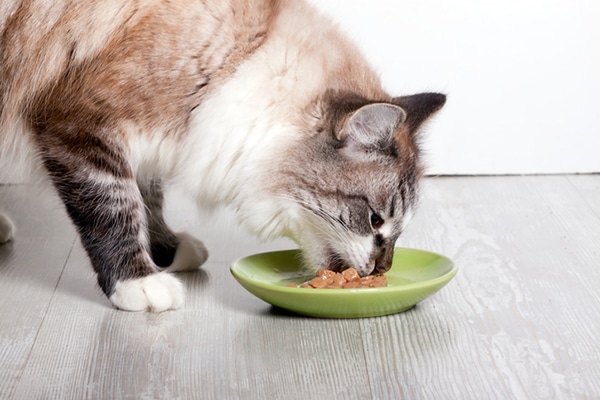As the owner of a diabetic cat who, fortunately, has been in remission for a few years now, I get asked about feline diabetes quite a bit. One question a lot of people have is how they can keep their cats from getting the disease. The good news is that for the vast majority of cats, there are six simple steps you can take to prevent your furry friend from getting feline diabetes.
1. The first step in preventing feline diabetes: watch your cat’s weight

As with Type 2 diabetes in humans, the most common risk factor for development of the diabetes in cats is obesity. A recent study revealed that 58 percent of cats are overweight or obese, and that’s a lot of ticking diabetes time bombs. Fat cats may be cute, but the health risks certainly are not. Make sure you feed your cat according to the instructions on his food, and if you are going to feed treats and snacks, make sure you compensate by feeding less at mealtime.
2. Feed your cat a species-appropriate diet
Cats are obligate carnivores. Their bodies evolved to eat a high-protein, low-carbohydrate and grain-free diet. Most vets these days agree that cats do best on a diet of canned food because the protein-carbohydrate balance is more in alignment with what their systems are designed to handle. Talk to your vet to determine the right diet for your cat.
3. Provide exercise and enrichment

Not only will exercise keep your cat’s weight down, it will reduce his stress level as well, so be sure to play with him every day. A bonus of daily play is that it will strengthen the bond between you and your furry friend. Environmental enrichment such as “catification” projects or outdoor catios can go a long way to de-stress a cat and give him things to do and play with when you’re away from home.
4. Make sure your cat gets regular checkups
I know it’s less than a party to get your cat into a carrier and to the vet’s office, but that annual (or semiannual, if your cat is a senior) checkup can be a lifesaver. It can also help you figure out if your cat is gaining or losing weight, which can be important signs of potential problems. I’ve long believed that the money you spend on regular checkups saves you twice as much in the long run, because illnesses can be detected early enough to avoid invasive and costly treatment further down the road.
5. Have regular blood and urine screenings done
Again, this is a core part of my belief in “an ounce of prevention.” Even if my Belladonna didn’t have a history of feline diabetes, I would still opt to have yearly blood and urine tests done to ensure that the parts of her I can’t see are working as well as the parts of her I can.
6. Minimize the use of steroids if possible
Although some chronic illnesses such as allergies, asthma and inflammatory bowel disease are typically treated with steroids, these medications are known to decrease the effectiveness of insulin in your cat’s body. This doesn’t mean you should never use steroids, because they can and do save lives. However, especially if your cat is overweight, be sure to work closely with your vet and do regular monitoring of your kitty’s blood and urine to ensure his little pancreas keeps working well.
Feline diabetes can be avoided if follow the steps above to keep your kitty fit, trim, and happy.
Tell us: Do you have any other tips on how to prevent diabetes in cats? Share your thoughts — and maybe even your stories about how you got a diabetic cat into remission — in the comments.
This piece was originally published in 2017.
Thumbnail: Photography ©RooIvan | Thinkstock.
Concerned about diabetes yourself? University Health News spells out exactly how you get diabetes >>
Read more about cat health on Catster.com:
- Ask a Vet: What Causes Cat Head Pressing
- Symptoms and Treatments for Arthritis in Cats
- Cat Constipation: What Can You Do About It?
About JaneA Kelley: Punk-rock cat mom, science nerd, animal rescue volunteer and all-around geek with a passion for bad puns, intelligent conversation, and role-play adventure games. She gratefully and gracefully accepts her status as chief cat slave for her family of feline authors, who have been writing their award-winning cat advice blog, Paws and Effect, since 2003.








